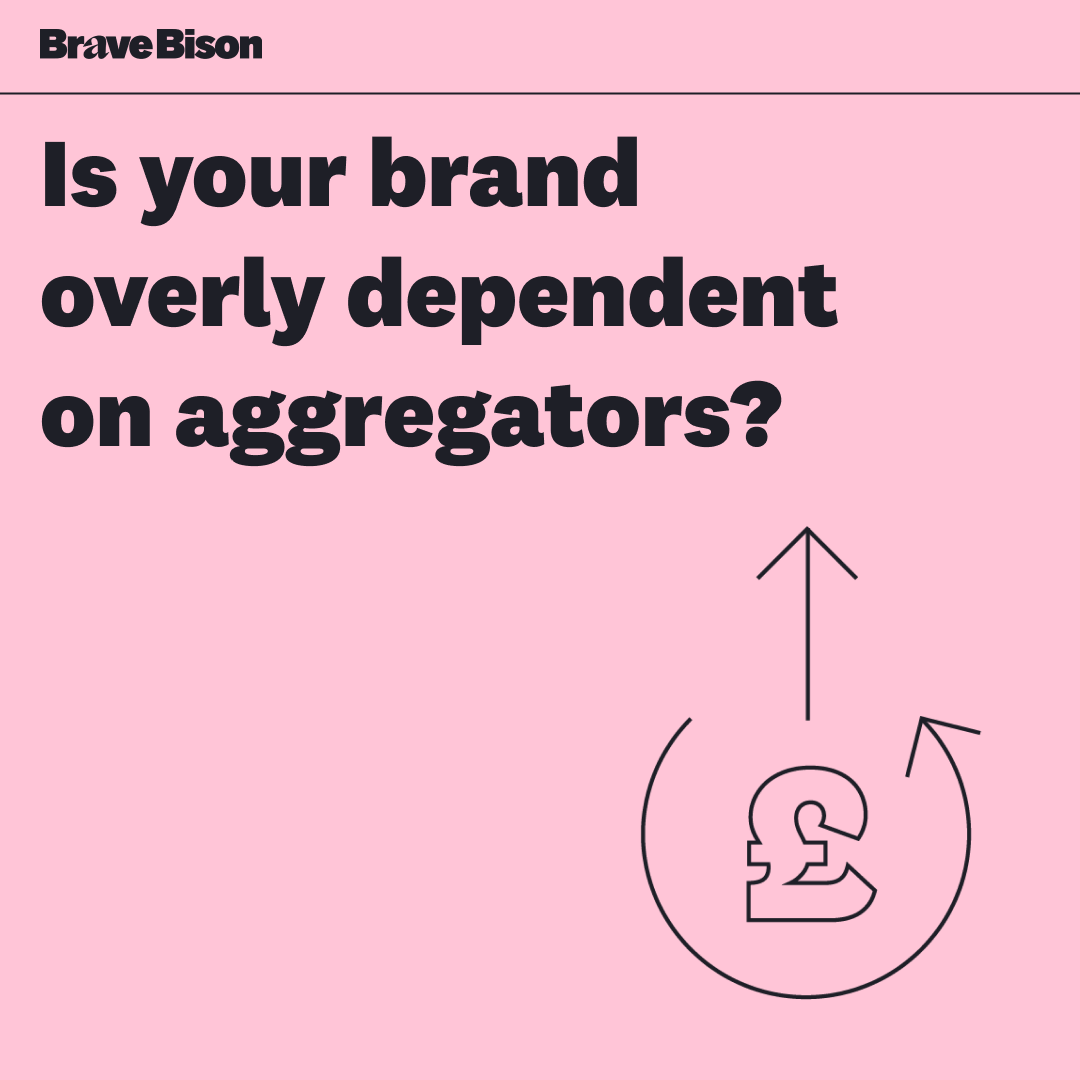
Is your brand overly dependent on aggregators?
January 2024
In an environment of rampant inflation, stagnant pay rises and waning trust, it’s no surprise today’s consumers are laser-focused on cost-efficiency and savings.
Whether booking a holiday, choosing a credit card, reserving a hotel, purchasing insurance products, or selecting an energy supplier, many rely on aggregator platforms as a cornerstone of their decision-making process, believing they offer an independent and trust-worthy authority on the best deals around.
The aggregator business model is a lucrative one — McKinsey reports that many aggregator platforms enjoy high profit margins of up to 40% EBITDA — but it’s the brands who’ve become hooked on them who are suffering as a result.
Industry giants like Booking.com, MoneySupermarket, Compare the Market and USwitch have not only altered the way consumers discover products and services but have also cultivated an ecosystem that empowers them with choice and information. To establish themselves as market leaders, these platforms have embraced aggressive marketing strategies—harnessing the power of digital channels such as search and display, alongside big budget brand-building campaigns to disrupt purchase journeys and grow large user bases—naturally fostering competition among brands to be featured on their sites.
However for many challenger brands, this leads to a serious dilemma.
You need to be featured on an aggregator platform to benefit from their large audience and the halo effect of their marketing efforts, but you often need to sacrifice your brand experience, price point and service offer in order to stand out against your competitors.
In short, these platforms have become a dangerous drug that many businesses struggle to become unhooked from. As the aggregator channel grows in importance for the brand, the pressure to discount prices has an increasing impact on the company’s overall margins. It’s a vicious cycle.
When it comes to understanding how much your brand should depend on aggregators for acquisition — or indeed, if it should at all — we believe there are 4 key factors to consider:
1. Available audiences.
Partnering with aggregators will offer broad exposure to those considering a purchase in your category, but unless you’re prepared to drop your prices, conversion becomes challenging when you appear alongside a sea of your competitors. By taking the time to understand the specific audiences you’re looking to engage and diverting more of your budget towards the precision targeting offered by paid social, search and display, you can defend your price premium by reaching those with the highest purchase intent in the right place, at the right time.
2. Cost per acquisition.
While aggregators may offer performance-based partnership models, the competition on their platforms can be pretty volatile, driving up your cost per acquisition significantly.Performance channels offer greater control over your budgets, allowing you to optimise your approach towards maintaining a more predictable and lower initial cost per acquisition.
3. Brand equity.
Digital marketing isn’t just about driving immediate results, it can also deliver on brand-building outcomes in a way that solely relying on aggregator platforms can’t. It’s a marketing truth universally acknowledged that investing in long term brand equity alongside short term acquisition is what truly propels businesses to success. It’s also a misconception that this can only be achieved through more costly broadcast media channels, both paid and organic social, SEO and even display advertising can all contribute to brand outcomes if employed as part of a holistic strategy. By funnelling too much of your marketing budget into the short-term reward of aggregator platforms, you’re stifling the future growth that comes from strong brand equity.
4. Customer ownership.
With the deprecation of third-party cookies imminent, now is the time for brands to get smart about how they collect and operationalise customer data. In a performance-based model, aggregators will do everything they can to safeguard their commission and increasingly this means designing and building their own sign-up processes rather than handing over leads and risking losing customers to a bad experience. This model effectively means that the aggregator “owns” your customer relationship— improving their chances of cross-selling and generating recurring revenue from the individual, but reducing YOUR chances of growing that customer relationship or nurturing future brand loyalty. It also means you’re sacrificing valuable data that can help you profile the customers most likely to buy your brand and build and target lookalike audiences.
Aggregators offer the advantages of access to a broad audience and performance-based acquisition models but they come at the cost of limited control, potentially resulting in higher initial acquisition costs, shorter customer lifecycles and diminished brand equity.
So, what can you as a marketer do to rebalance your approach?
We’ve developed a five step process to reduce your brand’s dependence on aggregators.
It’s surprisingly simple stuff, but we know first-hand that these steps will enable you to take greater control of lead generation while optimising cost and ensuring a resilient and brand-safe growth strategy.
